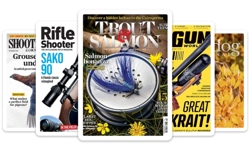In a highly entertaining presentation, Chris gave ten tips for more effective creative. Throughout he worked on two assumptions. Firstly that our ("our" in this instance being his audience) current direct marketing was woefully inadequate and secondly that we all had the perfect product, a stunning offer, correct choice of media – all that was left was to get the creative right!
Chris’ ten tips:
1. Make your mailing memorable.
"Most of the work you do is utterly forgettable!" We’re boxed into thinking of mailshots solely in terms of a letter and leaflet. We need to liberate ourselves and include something which adds real value to the mailshot. As publishers, we have a wealth of content that could be reformatted, so trawl through your vaults and, for instance, repurpose some old editorial into a miniature brochure. Give the pack an uplift.
2. Use digital printing to personalise.
Both text and imagery can be tailored using digital printing, so different reader segments (age, sex, lifestyle etc) can be presented with different messages, offers and visuals. Use the data to drive the variables. The more personalised the better and the costs of digital printing are coming down.
3. Give your headlines more punch.
Yes, benefits are crucial but think of impact too! There is a tendency to try and say it all in one line; to crystallise all the benefits into one all encompassing headline – don’t bother. The results are frequently bland. Make the reader sit up - push yourself closer to the edge.
4. Give your visuals more punch.
Again, this is as much about impact as benefits. Try to avoid falling back on stock-shot clichés. They’re cheap and readily available but do they add anything to your mailshot? It’s ok to use an extreme visual to make a generic point, but keep it relevant. Even the driest of B2B titles (and Chris had an excellent example used on a van fleet magazine) can inspire stunning visuals; on some titles you’ve just got to work a bit harder to find them.
5. Put clearer links into your emails.
Remember that an email is "a vehicle to take you somewhere else" – usually, in our case, an online subs form. Also, be assertive in your use of language; "click here to …." Tell them what you want / expect them to do.
6. Change the tone of your emails.
Email is a personal, slightly anarchic media. As with direct mail you should personalise as much as possible, but with email you can afford to be friendly, chatty and even a little risqué – but beware the spam filters. Incidentally text outpulls html. Some major companies (HSBC for example) now won’t accept html.
7. Say a bit more, not less.
This applies more to direct mail, than email. The people who are most likely to respond are already pre-disposed to your offering, so you need to make sure you cover all the issues. They will read longer copy if you have something to say.
8. Don’t write anything yourself!
(Well, I suppose he would say that, wouldn’t he.) You are too close to your title to write effective copy. Give it to the experts. Once you’ve outsourced it, DON’T REWRITE ANYTHING, with the sole exception of correcting technical errors. There are many different ways to say something; just because you would word it differently does not make it right.
9. Spend more time on the form.
Ah – the bit we all skip over, either because we think (wrongly) that it is the one bit we can repeat verbatim from the last mailshot or because we’d prefer not to face that data protection question again or perhaps because we’re creative types who feel a tad uncomfortable being that close to fulfilment. Whatever – the form has the power to undo all the good work that’s gone before. You need to work on the assumption that if people can get it wrong, they will get it wrong. Use the form to remind them of the benefits of subscribing. Push the web and telephone response options. Lastly, the form should stand alone.
10. Welcome subscribers with an MGM (member get member).
A new customer is your best advocate. Make it easy for them to betray a friend. Because of the highly targeted nature of this tactic and the subsequent low acquisition cost, you can even afford to heavily incentivise the offer.
FEATURE
Magazine Subscriptions Conference 2004
On 11 November the PPA held its annual Magazine Subscriptions conference at the Grosvenor House in London. Over 25 different speakers across 13 different seminars and presentations were squeezed into the day. James Evelegh went to the Creative Masterclass to hear the presentation of Chris Barraclough, creative partner of Barraclough Edwards Chamberlain.










